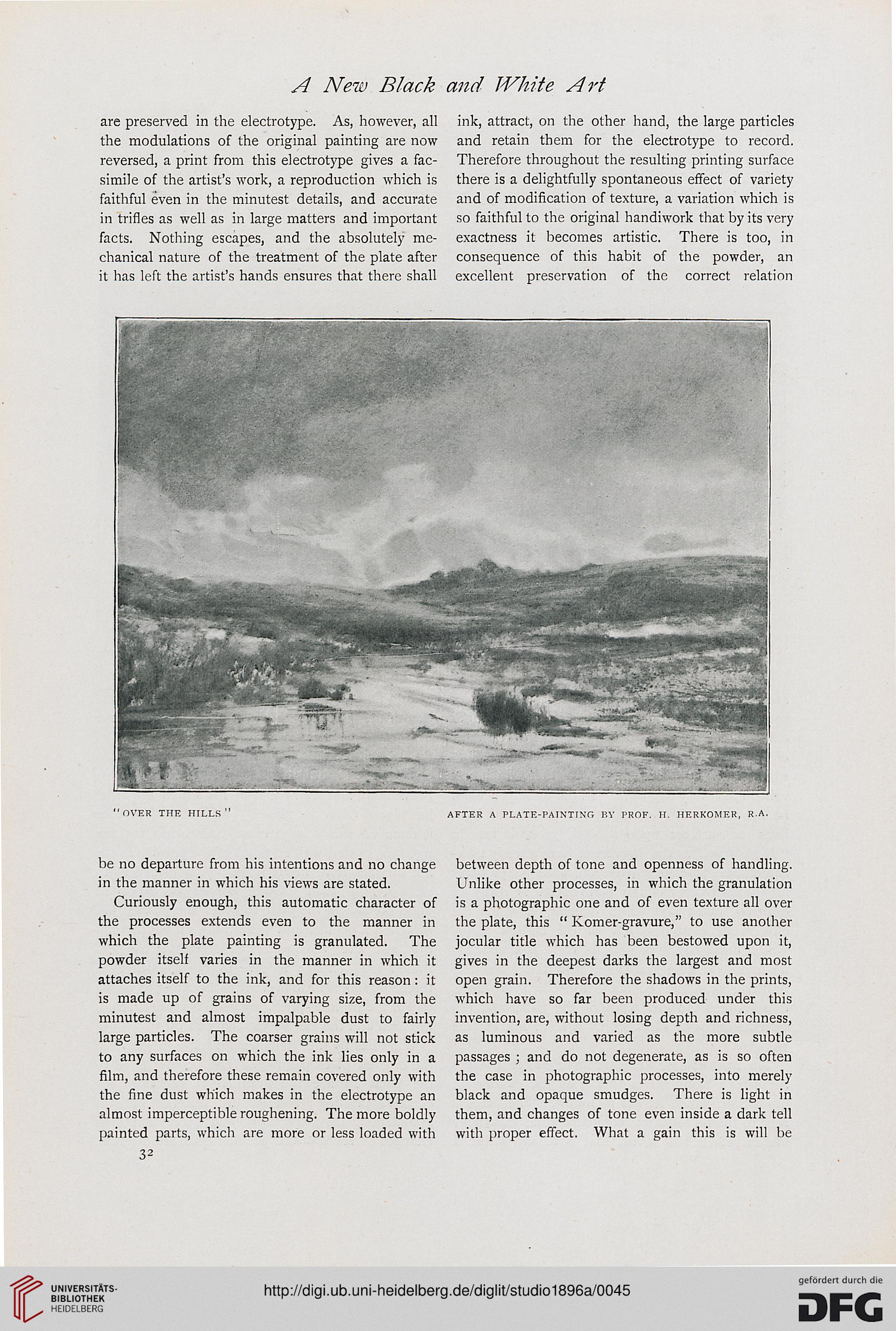A New Black and White Art
are preserved in the electrotype. As, however, all
the modulations of the original painting are now
reversed, a print from this electrotype gives a fac-
simile of the artist's work, a reproduction which is
faithful even in the minutest details, and accurate
in trifles as well as in large matters and important
facts. Nothing escapes, and the absolutely me-
chanical nature of the treatment of the plate after
it has left the artist's hands ensures that there shall
ink, attract, on the other hand, the large particles
and retain them for the electrotype to record.
Therefore throughout the resulting printing surface
there is a delightfully spontaneous effect of variety
and of modification of texture, a variation which is
so faithful to the original handiwork that by its very
exactness it becomes artistic. There is too, in
consequence of this habit of the powder, an
excellent preservation of the correct relation
be no departure from his intentions and no change
in the manner in which his views are stated.
Curiously enough, this automatic character of
the processes extends even to the manner in
which the plate painting is granulated. The
powder itself varies in the manner in which it
attaches itself to the ink, and for this reason : it
is made up of grains of varying size, from the
minutest and almost impalpable dust to fairly
large particles. The coarser grains will not stick
to any surfaces on which the ink lies only in a
film, and therefore these remain covered only with
the fine dust which makes in the electrotype an
almost imperceptible roughening. The more boldly
painted parts, which are more or less loaded with
32
between depth of tone and openness of handling.
Unlike other processes, in which the granulation
is a photographic one and of even texture all over
the plate, this " Komer-gravure," to use another
jocular title which has been bestowed upon it,
gives in the deepest darks the largest and most
open grain. Therefore the shadows in the prints,
which have so far been produced under this
invention, are, without losing depth and richness,
as luminous and varied as the more subtle
passages ; and do not degenerate, as is so often
the case in photographic processes, into merely
black and opaque smudges. There is light in
them, and changes of tone even inside a dark tell
with proper effect. What a gain this is will be
are preserved in the electrotype. As, however, all
the modulations of the original painting are now
reversed, a print from this electrotype gives a fac-
simile of the artist's work, a reproduction which is
faithful even in the minutest details, and accurate
in trifles as well as in large matters and important
facts. Nothing escapes, and the absolutely me-
chanical nature of the treatment of the plate after
it has left the artist's hands ensures that there shall
ink, attract, on the other hand, the large particles
and retain them for the electrotype to record.
Therefore throughout the resulting printing surface
there is a delightfully spontaneous effect of variety
and of modification of texture, a variation which is
so faithful to the original handiwork that by its very
exactness it becomes artistic. There is too, in
consequence of this habit of the powder, an
excellent preservation of the correct relation
be no departure from his intentions and no change
in the manner in which his views are stated.
Curiously enough, this automatic character of
the processes extends even to the manner in
which the plate painting is granulated. The
powder itself varies in the manner in which it
attaches itself to the ink, and for this reason : it
is made up of grains of varying size, from the
minutest and almost impalpable dust to fairly
large particles. The coarser grains will not stick
to any surfaces on which the ink lies only in a
film, and therefore these remain covered only with
the fine dust which makes in the electrotype an
almost imperceptible roughening. The more boldly
painted parts, which are more or less loaded with
32
between depth of tone and openness of handling.
Unlike other processes, in which the granulation
is a photographic one and of even texture all over
the plate, this " Komer-gravure," to use another
jocular title which has been bestowed upon it,
gives in the deepest darks the largest and most
open grain. Therefore the shadows in the prints,
which have so far been produced under this
invention, are, without losing depth and richness,
as luminous and varied as the more subtle
passages ; and do not degenerate, as is so often
the case in photographic processes, into merely
black and opaque smudges. There is light in
them, and changes of tone even inside a dark tell
with proper effect. What a gain this is will be




